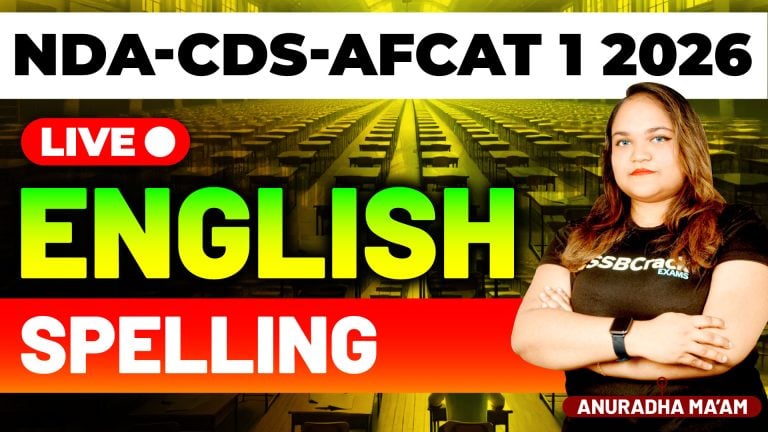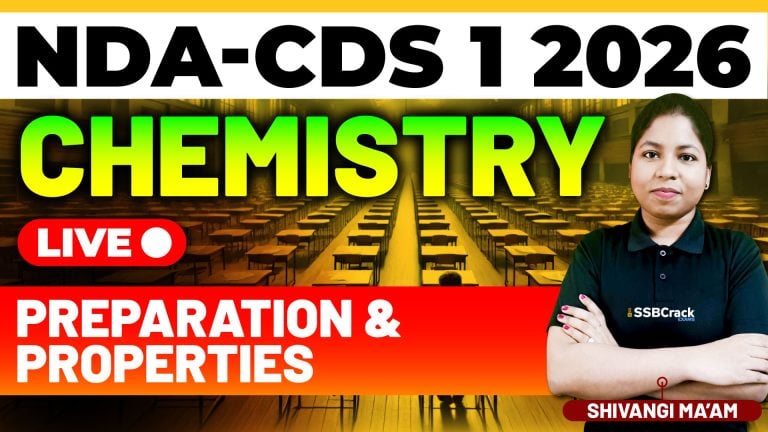Here is a clear, well-structured, plagiarism-free article on Inflation, Money, Money Market, Certificate of Deposit (CD), and Commercial Paper (CP) — useful for exams like UPSC, SSC, RBI, NABARD, Banking, and Defence exams.
NDA & CDS 1 2026 Exam GK – Economics – Class 2
1. Inflation
Inflation refers to the sustained increase in the general price level of goods and services in an economy over a period of time. When inflation rises, the purchasing power of money falls — meaning the same amount of money buys fewer goods than before.
Types of Inflation
- Demand-Pull Inflation: Occurs when overall demand in the economy exceeds supply.
- Cost-Push Inflation: Caused by rising production costs such as wages or raw materials.
- Built-In Inflation: Driven by wage–price spiral as workers demand higher wages to keep up with rising prices.
- Hyperinflation: Extremely rapid, uncontrollable inflation.
- Deflation: Opposite of inflation — general decline in prices.
Measures of Inflation in India
- CPI (Consumer Price Index) – Used for measuring retail inflation.
- WPI (Wholesale Price Index) – Measures inflation at the wholesale level.
- GDP Deflator – Broadest measure of inflation.
2. Money
Money is anything that is widely accepted as a medium of exchange, a unit of account, a store of value, and a standard of deferred payment.
Functions of Money
- Medium of Exchange – Facilitates transactions.
- Unit of Account – Measures value of goods/services.
- Store of Value – Saves purchasing power for the future.
- Standard of Deferred Payments – Useful for credit transactions.
Types of Money
- Fiat Money: Issued by government; has no intrinsic value (e.g., currency notes).
- Commodity Money: Has intrinsic value (e.g., gold, silver).
- Fiduciary Money: Based on trust (cheques, drafts).
- Digital Money: Includes online transfers, e-wallets, and CBDC (Digital Rupee).
3. Money Market
The money market is a segment of the financial market where short-term financial instruments with high liquidity and maturity of up to one year are traded. It helps meet short-term credit needs of the economy.
Key Functions
- Provides short-term funds to governments, banks, and corporations.
- Ensures liquidity in the financial system.
- Helps the RBI implement monetary policy.
Major Money Market Instruments in India
- Treasury Bills (T-Bills)
- Commercial Paper (CP)
- Certificate of Deposit (CD)
- Call Money / Notice Money
- Repo & Reverse Repo
- Cash Management Bills (CMBs)
4. Certificate of Deposit (CD)
A Certificate of Deposit is a negotiable money market instrument issued by banks and financial institutions to raise short-term funds. It is issued at a discount and redeemed at face value.
Key Features
- Issued by: Scheduled commercial banks and select financial institutions.
- Maturity: 7 days to 1 year for banks; 1 to 3 years for financial institutions.
- Denomination: Minimum ₹1 lakh.
- Tradable in secondary markets.
- Cannot be issued to individuals in demat form initially; later tradable.
Purpose
CDs help banks manage short-term liquidity needs, especially during tight monetary conditions.
5. Commercial Paper (CP)
A Commercial Paper is an unsecured, short-term promissory note issued by companies, financial institutions, and primary dealers to meet working capital needs.
Key Features
- Issued by: Corporates with good credit rating.
- Maturity: 7 days to 1 year.
- Issued at a discount and redeemed at face value.
- Minimum denomination: ₹5 lakh.
- Unsecured instrument (no collateral).
Why CP Is Issued
- To fund immediate financial requirements.
- To reduce dependence on bank loans.
- Corporates with strong ratings can borrow at lower cost than bank interest rates.



















